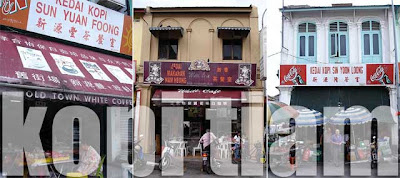 I've always wondered how it felt to ride those small commercial aircrafts in the Philippines. I had already taken the ATR42/72 from Guam to Saipan before and was surprised by the smooth ride. That's why the prospect of taking Seair's Dornier 328 plane to Caticlan excited me. And it's the fastest flight to Boracay at 35 minutes.
I've always wondered how it felt to ride those small commercial aircrafts in the Philippines. I had already taken the ATR42/72 from Guam to Saipan before and was surprised by the smooth ride. That's why the prospect of taking Seair's Dornier 328 plane to Caticlan excited me. And it's the fastest flight to Boracay at 35 minutes. It was an ambitious gathering of Philippine travel and photo bloggers organized by blogging guru Abe Olandres. We were divided into two flights. A group was scheduled to leave at 7 a.m. while I was with the 8:30 a.m. flight. I chose to arrive at the airport early to avoid rush hour traffic and got there 6:30 a.m. in time to watch the first group board. The next thing I knew, my name was called on the PA system for me to board as well!
It was an ambitious gathering of Philippine travel and photo bloggers organized by blogging guru Abe Olandres. We were divided into two flights. A group was scheduled to leave at 7 a.m. while I was with the 8:30 a.m. flight. I chose to arrive at the airport early to avoid rush hour traffic and got there 6:30 a.m. in time to watch the first group board. The next thing I knew, my name was called on the PA system for me to board as well!
 Since we were flying at an altitude lower than the regular commercial aircraft, the views were different. We were closer thus to the ground and at the level of many mountain peaks. The views were surreal! The sun was resplendently rising behind Mount Banahaw. And below us was a perfect view of the Tagaytay Ridge and Taal Volcano. We also flew past the grand mountains of Mindoro before reaching Caticlan. The Seair flight is itself a must-try with all these great views!
Since we were flying at an altitude lower than the regular commercial aircraft, the views were different. We were closer thus to the ground and at the level of many mountain peaks. The views were surreal! The sun was resplendently rising behind Mount Banahaw. And below us was a perfect view of the Tagaytay Ridge and Taal Volcano. We also flew past the grand mountains of Mindoro before reaching Caticlan. The Seair flight is itself a must-try with all these great views!Adventure Pass
Now this is something I'm getting for the summer break. For P18,500++, you can ride all you can for 45 days on Seair. The first two flights are bookable but the rest are based on seat availability which means you'll be a chance passenger. But with so many great destinations from Batanes to Tawi-Tawi, you'll never go wrong with this pass!
South East Asian Airlines (Seair)
Tel No. +63 2 8490100















